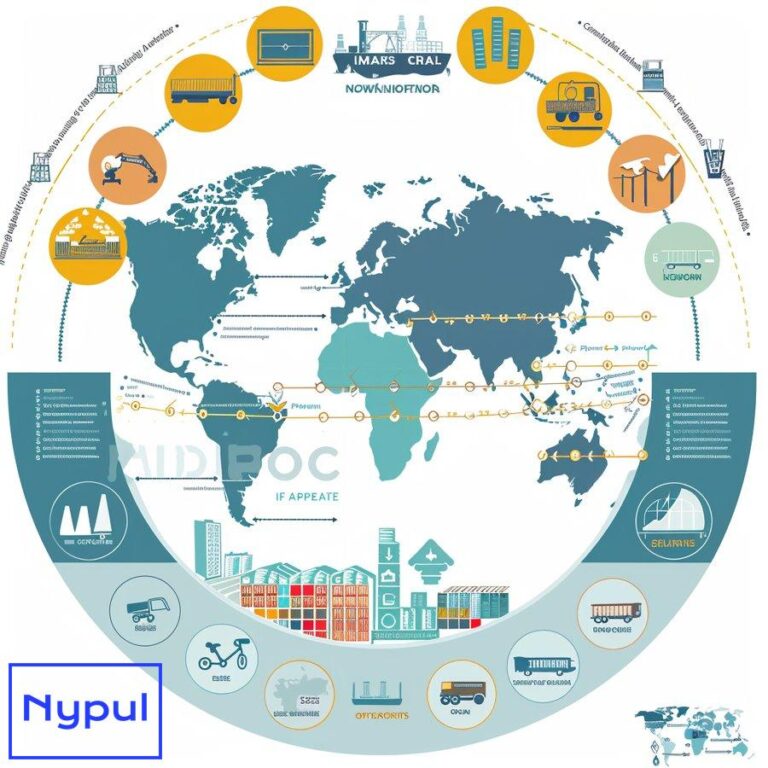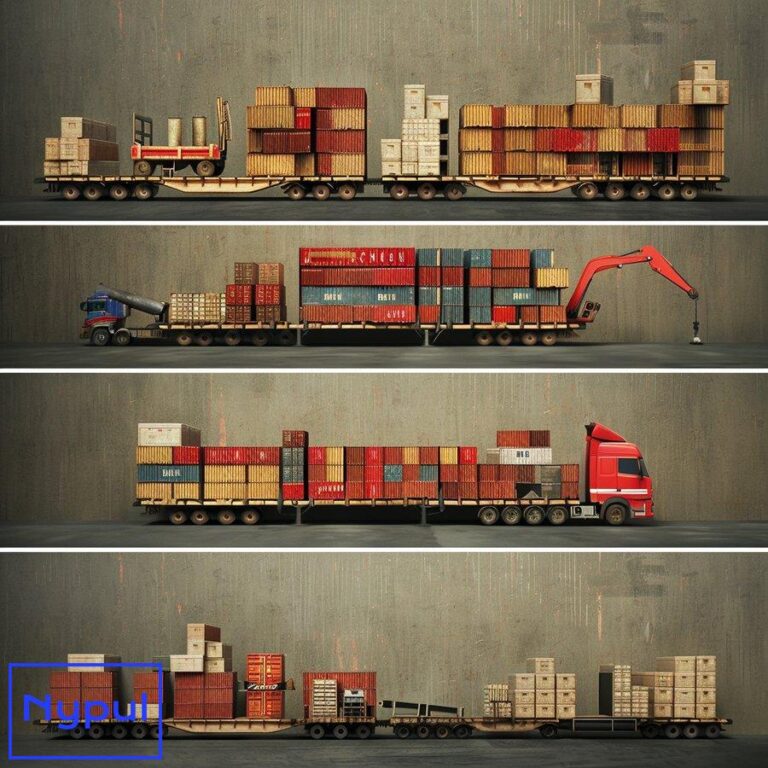What Is the Average Cost of Drayage
How much does drayage typically cost?

Drayage costs can vary widely depending on numerous factors, but understanding typical price ranges helps shippers and logistics professionals budget effectively. On average, drayage fees range from $200 to $3000 per container, with most shipments falling between $500 and $1500.
The wide range in pricing reflects the complexity of drayage operations. A short-distance move within a port complex may cost just a few hundred dollars, while longer hauls or shipments requiring special handling can reach several thousand. To provide more specific insights, let’s break down typical costs by container type and distance:
| Container Type | Short Distance (<50 miles) | Medium Distance (50-150 miles) | Long Distance (>150 miles) |
|---|---|---|---|
| 20′ Standard | $200 – $500 | $500 – $1000 | $1000 – $2000 |
| 40′ Standard | $300 – $700 | $700 – $1500 | $1500 – $3000 |
| 40′ High Cube | $350 – $800 | $800 – $1700 | $1700 – $3500 |
| Refrigerated | $400 – $1000 | $1000 – $2000 | $2000 – $4000 |
These figures serve as general guidelines. Actual costs may deviate based on specific circumstances, market conditions, and additional services required.
Per hundredweight pricing
Some drayage providers use a per hundredweight (CWT) pricing model. In this system, rates typically range from $60 to $160 per CWT. For example, a 10,000-pound shipment at $100 per CWT would cost $1000 for drayage.
Flat rate vs. variable pricing
Drayage companies may offer flat rate or variable pricing structures:
Flat rate pricing
Shippers pay a fixed amount regardless of weight or specific handling requirements. This model provides cost certainty but may result in overpaying for lighter shipments.
Variable pricing
Costs fluctuate based on weight, distance, and additional services. While potentially more cost-effective, this model introduces some uncertainty into budgeting.
Understanding these pricing models helps shippers choose the most suitable option for their specific needs and shipment characteristics.
Hidden costs and surcharges
The base drayage rate often doesn’t tell the full story. Additional fees can significantly impact the total cost:
Fuel surcharges
These fluctuate with diesel prices and typically range from 15% to 35% of the base rate.
Detention fees
Charged when loading or unloading exceeds the allotted free time, usually $75 to $150 per hour.
Per diem charges
Applied when containers are not returned within the specified timeframe, often $50 to $300 per day.
Chassis rental fees
If not included in the base rate, chassis rental can add $20 to $50 per day.
Overweight container fees
Containers exceeding weight limits may incur surcharges of $100 to $500.
Shippers should always request a detailed breakdown of potential fees to avoid surprises and accurately compare quotes from different providers.
Regional variations
Drayage costs can vary significantly by location. Major port cities like Los Angeles, New York, and Houston often have higher rates due to congestion and higher operating costs. Conversely, smaller ports or inland locations may offer more competitive pricing.
Seasonal fluctuations
Peak shipping seasons, typically around major holidays or during harvest times for agricultural products, can drive up drayage costs. Rates during these periods may increase by 10% to 30% compared to off-peak times.
Long-term vs. spot market rates
Shippers with consistent drayage needs often negotiate long-term contracts, securing more stable and potentially lower rates. Spot market rates, while offering flexibility, are subject to greater volatility and can be significantly higher during periods of high demand or capacity constraints.
Understanding the typical costs associated with drayage provides a solid foundation for budgeting and negotiation. However, the complex interplay of factors affecting pricing means that each shipment’s cost may deviate from these averages. In the following sections, we’ll delve deeper into these influencing factors and explore strategies for managing and reducing drayage expenses.
What factors influence drayage rates?
Drayage rates are influenced by a complex interplay of factors, ranging from operational considerations to market dynamics. Understanding these factors helps shippers anticipate costs and make informed decisions about their logistics strategies.
Distance and route complexity
The distance between the port or rail terminal and the final destination significantly impacts drayage rates. Longer distances naturally incur higher fuel costs and driver time. However, the relationship isn’t always linear:
Short-distance moves
Rates for very short moves (under 20 miles) may be disproportionately high due to fixed costs associated with equipment positioning and terminal operations.
Mid-range distances
Often offer the most cost-effective rates per mile as fixed costs are spread over a longer distance.
Long-distance drayage
Rates may increase more sharply beyond certain thresholds (e.g., 150 miles) as the move begins to resemble long-haul trucking rather than traditional drayage.
Route complexity also plays a role. Urban areas with heavy traffic, multiple stops, or restricted access can increase costs even for relatively short distances.
Container type and size
Different container types require specialized equipment and handling, impacting rates:
Standard containers
20′ and 40′ dry containers are the most common and typically have the lowest rates.
High cube containers
Slightly higher rates due to increased fuel consumption and potential height restrictions.
Refrigerated containers
Significantly higher rates due to specialized equipment, power requirements, and potential temperature monitoring.
Open-top or flat rack containers
May incur surcharges for oversized or oddly shaped cargo.
Tank containers
Higher rates due to specialized handling requirements and cleaning procedures.
Weight and cargo characteristics
The weight of the loaded container affects fuel consumption and may require special equipment:
Lightweight cargo
May benefit from lower rates, especially if it allows for multi-container loads on a single truck.
Heavy cargo
Increases fuel consumption and may require specialized chassis or tractors, leading to higher rates.
Overweight containers
Those exceeding standard weight limits incur significant surcharges and may require special permits.
Cargo characteristics also influence rates:
Hazardous materials
Require special handling, documentation, and sometimes route restrictions, increasing costs.
High-value goods
May necessitate additional security measures or insurance, affecting the overall rate.
Fragile items
Might require careful handling or specialized equipment, potentially increasing costs.
Market conditions and capacity
Drayage rates are highly sensitive to supply and demand dynamics:
Peak seasons
Rates typically increase during high-volume periods like pre-holiday shipping rushes or agricultural harvest seasons.
Port congestion
When ports experience backlogs, drayage capacity becomes strained, driving up rates.
Equipment imbalances
Shortages of chassis or containers in certain areas can lead to higher rates and additional repositioning fees.
Fuel prices
Fluctuations in diesel prices directly impact drayage rates. While many providers use fuel surcharges to address short-term price changes, sustained increases in fuel costs will be reflected in base rates over time.
Regulatory environment
Government regulations can significantly influence drayage costs:
Emissions standards
Stricter environmental regulations may require investment in newer, cleaner trucks, costs which are often passed on to shippers.
Hours of Service (HOS) rules
Limitations on driver working hours can impact productivity and potentially increase rates.
Port and terminal specific regulations
Some ports impose additional fees or requirements that drayage providers must factor into their rates.
Labor costs
Driver wages and benefits are a significant component of drayage rates. Areas with higher costs of living or strong labor unions typically see higher drayage rates.
Time sensitivity and service level
Expedited or guaranteed delivery services command premium rates:
Standard service
Offers the most economical rates but may have longer transit times or less precise delivery windows.
Expedited service
Faster transit times and guaranteed delivery windows come at a higher cost.
Same-day or hotshot services
Command the highest premiums for time-critical shipments.
Accessorial services
Additional services beyond basic transportation can significantly impact the total cost:
Customs clearance assistance
May be offered by some drayage providers for an additional fee.
Container transloading
The process of transferring cargo from ocean containers to domestic trailers can add substantial costs but may be economical for long inland moves.
Storage and container detention
Fees for holding containers beyond free time can quickly escalate total costs.
Special equipment requirements
Needs for lift gates, pallet jacks, or other specialized unloading equipment will increase rates.
Technology and visibility
Drayage providers offering advanced tracking and visibility solutions may charge higher rates, but these services can provide value through improved planning and reduced detention charges.
Contract terms and volume commitments
Shippers with consistent, high-volume needs can often negotiate more favorable rates through long-term contracts. Conversely, spot market rates for one-off shipments tend to be higher and more volatile.
Understanding these factors allows shippers to anticipate potential cost drivers and make informed decisions about their drayage strategies. By considering how these elements apply to their specific shipments, businesses can better negotiate rates, plan budgets, and optimize their supply chain operations.
How are drayage fees broken down?
Understanding the breakdown of drayage fees is crucial for shippers to accurately budget for their transportation costs and identify areas for potential savings. Drayage invoices can be complex, with numerous line items that may vary between providers. Here’s a comprehensive breakdown of typical drayage fees:
Base rate
The base rate forms the foundation of drayage pricing and typically includes:
Line haul charge
The core transportation cost for moving the container from origin to destination.
Driver wages
Compensation for the time spent on the move, including loading and unloading.
Equipment costs
Covers the use of the truck and basic equipment.
This base rate is usually calculated per container or per mile, depending on the provider’s pricing model.
Fuel surcharge
Fuel surcharges help drayage companies manage fluctuating diesel prices:
Percentage-based
Commonly calculated as a percentage of the base rate, typically ranging from 15% to 35%.
Per-mile surcharge
Some providers use a fixed per-mile surcharge that adjusts with fuel prices.
Fuel surcharges are often adjusted weekly or monthly based on published fuel price indices.
Chassis fees
Charges related to the use of the wheeled frame that supports the container:
Daily rental
Typically ranges from $20 to $50 per day.
Split chassis fee
Applied when a chassis must be obtained from a location separate from the container pickup point.
Chassis flip fee
Charged when a container needs to be transferred between chassis.
Terminal charges
Fees associated with port or rail terminal operations:
Gate fee
Charged for entering and exiting the terminal.
Congestion fee
Applied during periods of heavy terminal traffic.
Pre-pull fee
Charged when a container is retrieved from the terminal before the scheduled pickup time to avoid congestion or demurrage.
Pier pass fee
Specific to certain ports, encourages off-peak cargo movement.
Detention and demurrage
Charges incurred when equipment is held beyond allotted free time:
Container detention
Typically $50 to $300 per day for keeping containers beyond the free period.
Truck detention
Usually $75 to $150 per hour when loading or unloading exceeds the allotted time.
Demurrage
Port or terminal charges for containers that remain beyond the free time, often starting at $100 per day and escalating.
Accessorial charges
Additional fees for services beyond basic transportation:
Stop-off charge
Fee for additional pickup or delivery locations.
Inside delivery
Extra cost for bringing cargo inside a facility rather than tailgate delivery.
Liftgate service
Charge for using a hydraulic lift to load or unload cargo without a dock.
Overweight fees
Surcharges for containers exceeding standard weight limits, often $100 to $500.
Hazardous materials handling
Additional charges for transporting dangerous goods.
Weekend or after-hours service
Premium rates for pickups or deliveries outside normal business hours.
Administrative fees
Charges related to documentation and coordination:
Bill of lading fee
Cost for preparing shipping documents.
EDI fee
Charge for electronic data interchange services.
Scale ticket fee
Cost for obtaining certified weight measurements.
Customs documentation
Fees for preparing or processing customs-related paperwork.
Insurance and liability
Charges related to cargo protection:
Cargo insurance
Additional coverage beyond the carrier’s standard liability.
High-value surcharge
Extra fee for transporting exceptionally valuable goods.
Equipment positioning fees
Charges related to the movement of empty containers or equipment:
Bobtail charge
Fee for the truck to travel without a container, often to reposition for the next load.
Deadhead miles
Charges for empty miles traveled to reach the pickup location.
Miscellaneous fees
Various other charges that may appear on drayage invoices:
Clean truck fee
Surcharge in ports requiring the use of newer, lower-emission vehicles.
Traffic mitigation fee
Charged in some ports to fund congestion reduction programs.
Chassis maintenance fee
Covers ongoing maintenance and repairs of chassis equipment.
Toll charges
Passed through to the shipper for routes involving toll roads.
Understanding this fee structure allows shippers to:
Analyze costs
Break down expenses to identify the most significant cost drivers.
Compare quotes
Ensure they’re comparing like-for-like when evaluating different drayage providers.
Negotiate effectively
Target specific fee categories for potential reductions or waivers.
Budget accurately
Anticipate and plan for all potential charges associated with their shipments.
Identify optimization opportunities
Recognize areas where operational changes could lead to cost savings.
By thoroughly understanding how drayage fees are broken down, shippers can make more informed decisions about their transportation strategies and work more effectively with their drayage providers to manage costs.
How can you calculate drayage costs accurately?
Accurate calculation of drayage costs is essential for effective budgeting and logistics planning. While the complexity of drayage pricing can make precise calculations challenging, following a structured approach can significantly improve accuracy. Here’s a comprehensive guide to calculating drayage costs:

Gather essential information
Before beginning calculations, collect key details about the shipment:
Origin and destination
Exact addresses for pickup and delivery points.
Container type and size
Standard 20′ or 40′, high cube, refrigerated, etc.
Cargo weight
Total weight of the loaded container.
Commodity type
Nature of the goods, including any special handling requirements.
Desired pickup and delivery dates
Timeframe for the move, including any time-sensitive requirements.
Determine the base rate
Start with the core transportation cost:
Per-container pricing
Many drayage providers offer flat rates based on container size and type for specific origin-destination pairs.
Mileage-based calculation
For routes without established flat rates, multiply the total miles by the provider’s per-mile rate.
Weight-based pricing
Some providers use a per hundredweight (CWT) model. Calculate the total CWT and multiply by the rate.
Example calculation:
40′ container, 100-mile move, rate of $3.50 per mile
Base rate = 100 miles × $3.50 = $350
Add fuel surcharge
Calculate the fuel surcharge based on the provider’s current rate:
Percentage-based
Multiply the base rate by the current fuel surcharge percentage.
Per-mile surcharge
Multiply the total miles by the per-mile fuel surcharge rate.
Example calculation:
25% fuel surcharge on $350 base rate
Fuel surcharge = $350 × 0.25 = $87.50
Include chassis fees
Factor in chassis rental costs:
Daily rental
Multiply the daily chassis rate by the number of days required.
Bundled pricing
Some providers include chassis fees in their base rate.
Example calculation:
2-day move, $40 daily chassis rate
Chassis fee = 2 days × $40 = $80
Account for terminal charges
Add applicable port or rail terminal fees:
Gate fees
Include charges for entering and exiting the terminal.
Congestion surcharges
Add any current congestion-related fees.
Pre-pullAccount for terminal charges**
Add applicable port or rail terminal fees:
Gate fees
Include charges for entering and exiting the terminal. These fees typically range from $50 to $150, depending on the port.
Congestion surcharges
Add any current congestion-related fees, which can vary based on the time of day and traffic conditions at the terminal.
Pre-pull fees
If you need to retrieve a container before the scheduled pickup time to avoid congestion, this fee may apply, usually around $100 to $200.
Example calculation:
Assuming a gate fee of $75, a congestion surcharge of $50, and a pre-pull fee of $150:
Total terminal charges = $75 + $50 + $150 = $275
Include detention and demurrage fees
Consider potential detention and demurrage charges if there’s a chance of delays:
Container detention fees
These are charged for holding containers beyond the free time allowed. Typically, this is around $100 per day.
Truck detention fees
If loading or unloading takes longer than expected, you may incur truck detention charges, often around $100 per hour after the free time expires.
Example calculation:
If you anticipate one day of container detention and two hours of truck detention:
Container detention = 1 day × $100 = $100
Truck detention = 2 hours × $100 = $200
Total detention costs = $100 + $200 = $300
Add accessorial charges
Include any additional services that may be required:
Stop-off charges
If there are multiple pickup or delivery points, each stop may incur an additional fee, typically around $50 to $150 per stop.
Liftgate service fees
If you require a liftgate for loading or unloading, this service often costs between $75 and $150.
Example calculation:
Assuming one stop-off charge of $100 and one liftgate service fee of $125:
Total accessorial charges = $100 + $125 = $225
Calculate total drayage cost
Finally, sum all components to determine the total drayage cost:
$$
\text{Total Drayage Cost} = \text{Base Rate} + \text{Fuel Surcharge} + \text{Chassis Fees} + \text{Terminal Charges} + \text{Detention Fees} + \text{Accessorial Charges}
$$
Using our example calculations:
- Base Rate: $350
- Fuel Surcharge: $87.50
- Chassis Fees: $80
- Terminal Charges: $275
- Detention Fees: $300
- Accessorial Charges: $225
$$
\text{Total Drayage Cost} = 350 + 87.50 + 80 + 275 + 300 + 225 = 1317.50
$$
Thus, the total drayage cost for this shipment would be $1,317.50.
By following this structured approach and accurately gathering all relevant information, shippers can effectively calculate their drayage costs and make informed decisions about their logistics strategies.
What strategies can reduce drayage expenses?
Reducing drayage expenses is crucial for improving overall supply chain efficiency and profitability. Shippers can adopt several strategies to minimize costs associated with drayage operations. Here are some effective approaches:

Optimize routing and scheduling
Efficient routing and scheduling can significantly reduce costs:
- Consolidate shipments: Combining multiple shipments into a single move can maximize truck utilization and lower costs per unit.
- Plan routes carefully: Use route optimization software to identify the most efficient paths, avoiding congested areas whenever possible.
- Schedule during off-peak hours: Deliveries during non-peak times can help avoid congestion-related delays and associated costs.
By optimizing routing and scheduling, shippers can enhance efficiency while reducing fuel consumption and labor costs.
Negotiate contracts with providers
Establishing strong relationships with drayage providers allows shippers to negotiate better rates:
- Long-term agreements: Commit to long-term contracts in exchange for lower rates.
- Volume discounts: Leverage high shipping volumes to negotiate discounts.
- Service level agreements (SLAs): Clearly define expectations in SLAs to ensure reliable service without hidden fees.
Effective negotiation can lead to substantial savings over time.
Utilize technology for visibility
Investing in technology solutions can enhance visibility throughout the supply chain:
- Tracking systems: Implement GPS tracking solutions to monitor shipments in real-time, allowing for proactive management of delays.
- Data analytics: Analyze historical data to identify trends in costs and performance, enabling better decision-making.
- Automated reporting: Use automated systems for invoicing and reporting to reduce administrative overhead.
By leveraging technology effectively, shippers can optimize operations and reduce unexpected costs.
Improve container management
Efficient management of containers can lead to significant savings:
- Reduce empty miles: Minimize deadhead miles by strategically planning pickups and drop-offs.
- Utilize chassis pools: Participate in chassis pooling arrangements to reduce rental costs.
- Return containers promptly: Avoid demurrage fees by ensuring containers are returned within the free time allotted.
Effective container management enhances operational efficiency while minimizing unnecessary expenses.
Implement best practices for loading/unloading
Improving loading and unloading processes can reduce detention fees:
- Streamline processes: Train staff on efficient loading/unloading techniques to minimize time spent at terminals.
- Use appropriate equipment: Ensure the right tools (e.g., forklifts, pallet jacks) are available to expedite operations.
- Communicate with drivers: Maintain clear communication with drivers regarding expectations upon arrival at loading/unloading sites.
By implementing best practices in loading/unloading operations, shippers can minimize delays and associated costs.
Consider alternative transportation modes
Exploring alternative transportation modes may provide cost savings:
- Intermodal shipping: Utilize rail or barge transport for long-distance moves where feasible. This approach often reduces overall transportation costs compared to trucking alone.
- Regional carriers: Investigate smaller regional carriers that may offer competitive rates compared to larger national providers.
- Collaborative shipping: Partner with other businesses to share transportation resources and reduce costs collectively.
By considering alternative modes of transportation, shippers can find more economical solutions for their logistics needs.
How do regional differences affect drayage pricing?

Regional differences play a significant role in determining drayage pricing due to variations in market conditions, operational costs, regulations, and infrastructure. Understanding these regional factors is crucial for shippers looking to optimize their logistics strategies. Here are some key aspects that influence how regional differences affect drayage pricing:
Market demand and capacity
The balance between supply and demand varies across regions:
- High-demand ports: Major ports like Los Angeles or New York often experience higher demand for drayage services due to volume fluctuations. This increased demand typically leads to higher rates.
- Capacity constraints: Regions with limited trucking capacity may see inflated prices as competition for available trucks intensifies during peak seasons or periods of congestion.
Understanding local market dynamics allows shippers to anticipate pricing trends based on demand fluctuations.
Operational costs
The cost structure of drayage operations varies significantly by region:
- Labor costs: Areas with higher living expenses often have elevated driver wages, which directly impacts rates.
- Fuel prices: Regional variations in fuel prices contribute significantly to overall transportation costs. Areas with higher fuel prices will typically see increased drayage rates due to fuel surcharges.
- Equipment availability: Regions with limited access to chassis or specialized equipment may incur additional rental fees or surcharges due to scarcity.
Shippers should consider these operational cost factors when evaluating drayage pricing across different regions.
Regulatory environment
Local regulations can significantly impact drayage pricing:
- Emissions standards: Stricter environmental regulations in certain states or cities may require investment in cleaner equipment, leading to higher operating costs passed on as increased rates.
- Hours of Service (HOS) rules: Variations in HOS regulations across states can affect driver productivity and ultimately influence pricing structures.
- Port-specific regulations: Some ports impose additional fees or requirements that directly impact drayage providers’ operating costs.
Understanding the regulatory landscape helps shippers anticipate potential cost implications when shipping through different regions.
Infrastructure quality
The quality of regional infrastructure affects operational efficiency:
- Road conditions: Poor road conditions or inadequate infrastructure can lead to increased wear-and-tear on equipment and longer transit times. This inefficiency often results in higher rates as providers factor in maintenance costs.
- Port congestion levels: Regions with congested ports may experience delays that lead to increased detention fees. Shippers should consider potential congestion when selecting ports for their shipments.
- Access points: The availability of efficient access points (e.g., intermodal terminals) influences overall logistics efficiency and cost structures.
Evaluating infrastructure quality allows shippers to make informed decisions about which regions offer the best value for their drayage needs.
What real-world examples illustrate drayage cost variations?
Real-world examples provide valuable insights into how various factors influence drayage pricing across different scenarios. Here are several case studies that illustrate these variations effectively:
Example 1: Port of Los Angeles vs. Port of Savannah
The Port of Los Angeles is one of the busiest ports in the United States, experiencing significant congestion due to high volumes of cargo traffic. In contrast, the Port of Savannah has seen rapid growth but generally maintains more efficient operations due to its newer infrastructure.
In a comparative analysis:
| Factor | Port of Los Angeles | Port of Savannah |
|---|---|---|
| Average Drayage Cost | Higher ($1,500 – $3,000) | Lower ($800 – $1,500) |
| Congestion Level | High | Moderate |
| Average Turnaround Time | Longer (4+ hours) | Shorter (1 – 2 hours) |
Shippers moving containers from these ports will notice significant differences in overall drayage expenses due primarily to congestion levels affecting turnaround times at terminals.
Example 2: Refrigerated vs. Standard Containers
A company shipping refrigerated goods from Miami International Airport (MIA) versus standard dry goods from Atlanta’s Hartsfield-Jackson Airport illustrates how cargo type impacts pricing:
| Cargo Type | MIA (Refrigerated) | ATL (Standard) |
|---|---|---|
| Average Drayage Cost | Higher ($2,000 – $4,000) | Lower ($500 – $1,500) |
| Equipment Requirements | Specialized refrigeration units | Standard trucks |
| Handling Complexity | Higher | Lower |
Refrigerated shipments incur higher rates due to specialized handling requirements and equipment needs compared with standard dry goods transport.
Example 3: Seasonal Demand Fluctuations
During peak shipping seasons such as pre-holiday periods or agricultural harvest times (e.g., fall), demand spikes significantly impact pricing across various regions:
| Season | Average Drayage Cost Increase |
|---|---|
| Pre-Holidays | Up by 20% – 30% |
| Harvest Season | Up by 15% – 25% |
Shippers should plan ahead during these peak periods as they will experience higher rates due to increased demand for available trucks and drivers.
Example 4: Urban vs. Rural Deliveries
A comparison between urban deliveries in New York City versus rural deliveries in upstate New York highlights how location affects pricing structures:
| Location | NYC (Urban Delivery) | Upstate NY (Rural Delivery) |
|---|---|---|
| Average Drayage Cost | Higher ($1,000 – $2,500) | Lower ($400 – $800) |
| Traffic Congestion Level | High | Low |
| Delivery Complexity | Higher | Lower |
Urban deliveries often come with challenges such as traffic congestion and limited access points that drive up overall costs compared with rural areas where logistics tend to be simpler.
These real-world examples underscore how various factors—such as location, cargo type, seasonal demand fluctuations—impact drayage pricing across different scenarios. By analyzing these case studies, shippers gain valuable insights into potential cost drivers within their own logistics operations. Understanding these variations enables businesses to make informed decisions about their shipping strategies while optimizing their budgets effectively.






